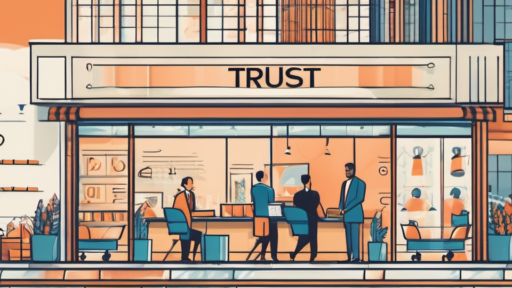The Secret to Building a Sustainable Business: Balancing Regulations with Market Opportunities
Forget the old ways of doing business – the days of unchecked growth are over. In a world grappling with climate change, social inequality, and resource scarcity, businesses that don’t tread lightly risk being left behind. But don’t worry – we’re not talking about sacrificing profitability for sustainability! In fact, there’s a whole new world of green business opportunities waiting to be discovered, ready to drive your success while creating a better tomorrow.
Navigate the Shifting Landscape: Embracing the Regulations
It’s a jungle out there, and not just for pandas! The business landscape is constantly evolving, with new environmental regulations popping up faster than you can say “carbon footprint.” But before you throw your hands up in frustration, think of these regulations as a roadmap. They’re a framework for navigating the sustainable business world and opening doors to untapped markets.
The Golden Rule: Regulations Are More Than Rules – They Are Opportunities
Let’s face it – environmental regulations can seem intimidating at first. Sustainable practices, corporate social responsibility, carbon emission targets – it all feels like a complex puzzle. But here’s the catch – the companies who embrace these challenges early on gain a significant advantage.
Think of it this way: Early adopters often enjoy less competition, smoother compliance, and a reputation for being a responsible, forward-thinking brand. These advantages translate to more customer loyalty, increased investment, and a competitive edge in the marketplace.
Compliance vs. Competitive Edge: Embracing Green Technology and Circular Economy Strategies
Companies like Patagonia are showing us that aligning with environmental goals isn’t just good for the planet – it’s good for business! By prioritizing sustainability in their product lifecycle, Patagonia has found innovative ways to minimize their environmental footprint while engaging customers who share their values.
Instead of viewing environmental regulations as roadblocks, see them as opportunities to:
- Embrace green technology: Invest in cutting-edge technologies to improve energy efficiency, reduce emissions, and develop eco-friendly products. This not only enhances your brand image but opens up new avenues for growth.
- Adopt a circular economy: This innovative approach focuses on keeping resources in circulation for as long as possible, minimizing waste and resource depletion. This means embracing practices like reusing, repurposing, and recycling materials, creating a more sustainable business model.
Case Study: The Rise of Sustainable Packaging
Let’s look at sustainable packaging as an example. In a world consumed by convenience, companies are exploring ways to package their products with minimal environmental impact. Biodegradable materials, compostable containers, and innovative packaging designs are all on the rise, driven by consumer demand and stricter environmental regulations.
Companies that invest in sustainable packaging now are poised to win over environmentally conscious consumers while remaining ahead of future regulatory requirements. This is just one example of how aligning business strategies with environmental regulations can unlock profitable opportunities.
Go Beyond Compliance: Seek Out Market Opportunities in Sustainability
Sustainable practices aren’t just about fulfilling regulatory obligations. They’re a springboard to unleash a whole new level of business growth. Here’s where the real gold is: tapping into the booming sustainable market where environmentally conscious consumers and investors are waiting.
Unleashing Sustainable Market Potential: Eco-Friendly Products and Responsible Supply Chains
Think of it this way – sustainable business is not just about saving the planet; it’s about shaping the future of business. This means:
- Targeting eco-conscious consumers: Today’s consumers are increasingly interested in sustainable products, fair labor practices, and ethical sourcing. By creating products that meet these demands, you attract loyal customers and strengthen brand affinity.
- Building responsible supply chains: Trace your supply chains back to their origin to ensure ethical and sustainable practices. Transparency is key! Companies that can showcase their commitment to social responsibility are building trust with customers who seek authenticity.
Sustainable Investments are Booming: The Green Finance Revolution
Remember that ESG Investing (Environmental, Social, and Governance) is more than a trend – it’s a revolution! Investors are actively seeking businesses that align with their values and invest in sustainable technologies. Companies embracing sustainability are more likely to secure funding, attract talent, and ultimately thrive in the long run.
**The key is to remember: sustainability is not a constraint – it’s an opportunity. By harnessing the power of sustainable practices, you are not only minimizing your impact on the planet but also opening up a whole new world of possibilities for your business. **
Key Takeaways for Sustainable Business Success
Here are the crucial steps to integrate sustainability into your business strategy for long-term success:
- Embrace environmental regulations: View regulations not as burdens but as opportunities to gain a competitive advantage by staying ahead of the curve.
- Invest in green technology and a circular economy: This demonstrates commitment to sustainable practices, reducing your footprint, and gaining valuable brand recognition.
- Target eco-conscious consumers: Build a customer base by catering to environmentally aware individuals who seek ethical and sustainable products.
- Embrace transparent and responsible supply chains: Ensure fair labor practices and ethical sourcing to attract consumers seeking a socially responsible brand.
- Align with ESG principles: Tap into the growing green finance movement and attract investors who value sustainable businesses.
By understanding the shift towards a more sustainable future, your business can navigate the regulatory landscape while embracing the opportunities that come with it. Remember, the power to shape a sustainable future rests in the hands of innovative businesses, and you have the chance to be a driving force!






